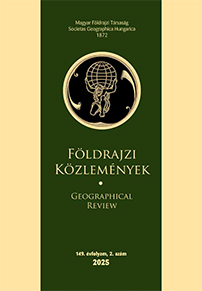GEOGRAPHY AND MEMORY IN THE CONTEXT OF EAST-CENTRAL EUROPEAN IDENTITY PRODUCTIONS
Abstract
This study examines the interconnections between collective memory, space, and identity in the context of Central and Eastern Europe, emphasizing human geography approaches. It outlines the theoretical foundations of social memory based on concepts by Halbwachs, Assmann, and Nora, while extending beyond these to explore memory’s relationships with places and spaces. A fundamental argument is that the interdisciplinary nature of memory studies allows for the integration of geographical perspectives, which have been underrepresented, particularly in Hungarian academia. The historical traumas of Central and Eastern Europe – including wars, forced migrations, and regime changes – are crucial in shaping memoryscapes and traumascapes, which are closely tied to social conflicts and collective identities. Consequently, memory narratives in the post-socialist region are often contentious, competing, and subject to continuous reinterpretation. Through various examples, the study investigates the geographical dimensions of memory, focusing on memoryscapes, traumascapes, and the political and social roles of memory. It highlights how memory-oriented communal actions in Eastern Europe possess a dynamic, often competitive identity-forming force, contrasting with Western European commemorative models that are more linear and ritual-based. The research contributes to the interdisciplinary discourse by emphasizing the importance of geographical approaches in understanding the spatial aspects of memory and identity. This perspective enriches the field of memory studies and provides new insights into the complex relationships between collective memory, space, and identity in the context of Central and Eastern Europe.
Copyright (c) 2025 Barta Géza

This work is licensed under a Creative Commons Attribution-NonCommercial-NoDerivatives 4.0 International License.



